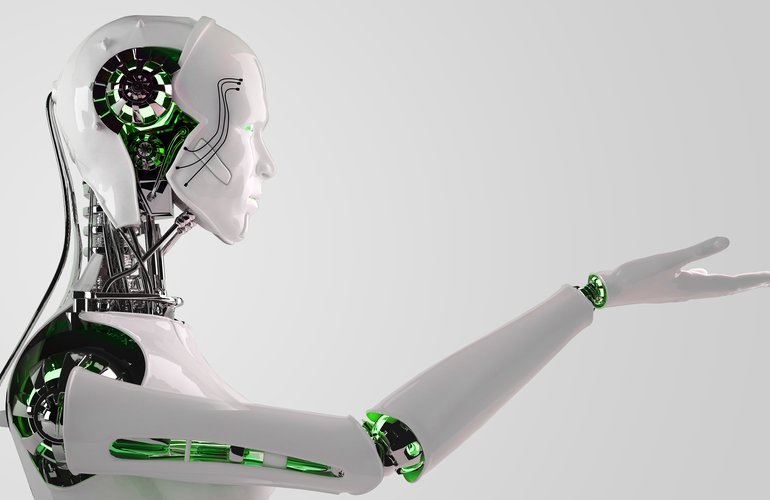[Adobe Stock]
Karel Čapek’s play R.U.R., which premiered in 1921, coined the word “robot,” framing it as explicitly humanoid laborers. It’s taken more than a century for that vision to materialize. Some pundits now expect humanoid robots to become a household reality in the coming years. “I believe that many homes will have a humanoid robot but probably not until 2030,” said Chris Matthieu, VP, Developer Ecosystem at RealSense.
Meanwhile, the traction is building. Bank of America Global Research predicts 18,000 humanoid robot shipments in 2025, notes an article in IEEE Spectrum, which is nonetheless skeptical about the potential of the technology to scale, calling the market for humanoid robots “almost entirely hypothetical.” Some pundits point to current technical hurdles. Bain notes that current humanoid robots operate for only about two hours on battery power, and achieving a full eight-hour shift could take up to 10 years.
Others are more optimistic. Morgan Stanley, for one, forecasts approximately 1 billion humanoid robots in operation by 2050. It suggests that the market could be worth $5 trillion by the middle of the century.
Robots that can do errands and chores?
A factor that makes the dream more than an aspiration is the business model that could emerge. The economic calculation shifts when a physical robot can reliably handle routine household tasks: cleaning, laundry, basic cooking, lawn care, errands. At that point, the decision moves from buying a robot outright for a five- or six-figure sum to renting one to fish leaves from your pool.
“As soon as these robots can start doing basic chores like house cleaning, laundry, cooking, lawn care, pool care, etc., it will be easy to justify using one instead of paying humans to help with these services,” Matthieu said.
The robot-as-a-service model could open the doors for broader traction, he predicted. “I believe that we will probably lease them (robot-as-a-service) instead of paying $10k+ to purchase one. It will have over-the-air updates (just like your phone) and will continue to learn more tasks and have more context or memory to function as a personal assistant as well.”
Current early deployments of humanoid robots like Figure 01 are estimated between $30,000 and $150,000, while models like Fourier’s GR-1 targeting mass production are projected at $150,000 to $170,000.
2024–25 saw multiple startups and incumbents move from lab demonstrators to prototypes and field trials. Stanford’s 2025 AI Index, which featured a highlight on humanoids, as well as other industry reports document active launches of humanoid models such as Figure 02. These fielded machines are being tested for hours-per-charge, payloads and practical tasks such as making coffee and assisting in light assembly — the kinds of capabilities that map to household chores.
Physical AI is dawning
Meanwhile, large AI-hardware and software vendors are purpose-building stacks for “physical AI.” NVIDIA, for example, is explicitly positioning robotics and real-world action as a next frontier, and the company’s research and product moves (robotic foundation models, robotics computers and simulation stacks) are designed to lower the engineering cost of building robust robot behavior. NVIDIA’s push into robotics compute and the language+motion stacks (the GROOT/Thor work) is a concrete example of industry platformization.
Physical AI is not just a buzzword. “Everything is becoming physical AI,” Matthieu wrote over email. In the coming years, the gap between the cyber and physical will continue to shrink, he envisions. “We’re moving from programming robots to assigning them missions. You just say, ‘Go get me a beer,’ and they reason it out, they understand their environment, where the kitchen is, and how to open the refrigerator. That’s powered by multimodal models that combine language, vision, and reasoning.”
Real-world deployments in controlled environments are providing the operational data necessary to build consumer offerings. BMW has run humanoid tests at a U.S. plant, while Tesla planned to produce 5,000 Optimus robots (since scaled back owing to design problems with the robot’s hands and arms). Meanwhile, BYD’s humanoid deployments primarily involve UBTech’s Walker S1 robots in partnership arrangements rather than BYD-manufactured units.
Robots could become economic participants, too
Matthieu envisions humanoids that can run errands autonomously: grocery shopping, picking up dry cleaning and more. These robots would need embedded payment capabilities, he explained, “maybe an NFC in their wrist” for contactless transactions, along with APIs to dispatch robotaxis like Waymo.
“Yes, this means that robots will pay other robots for goods and services too,” Matthieu said. Rather than traditional credit card transactions, he suggested, such a system might use digital or cryptocurrency-based settlement rails optimized for machine-to-machine commerce.
Read the full article from the Source




